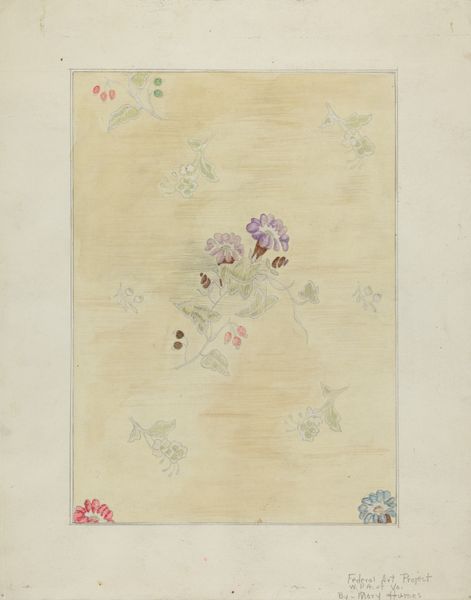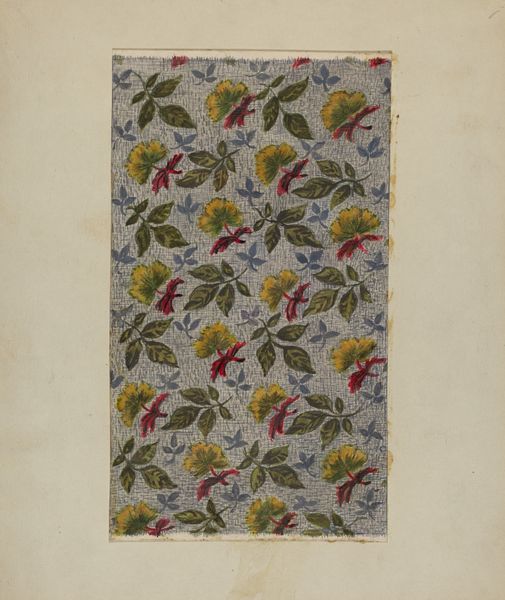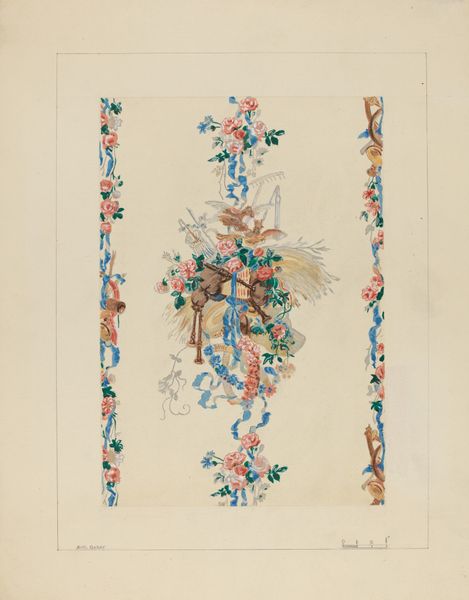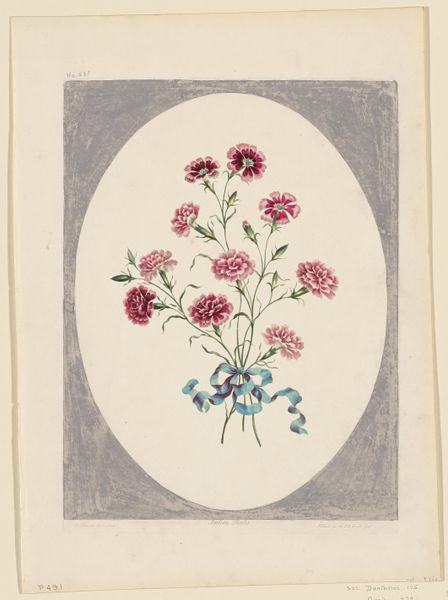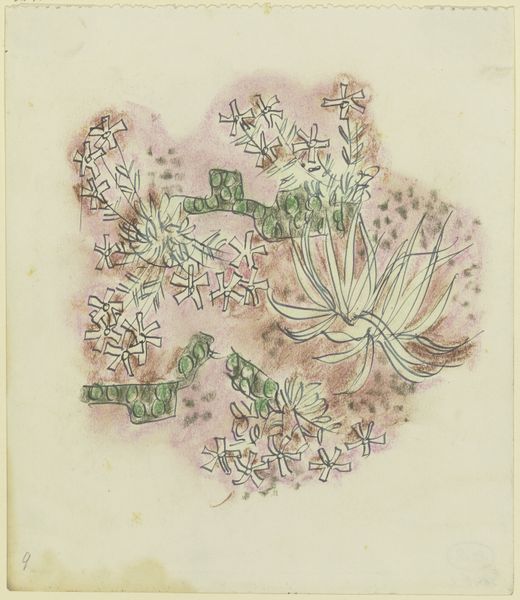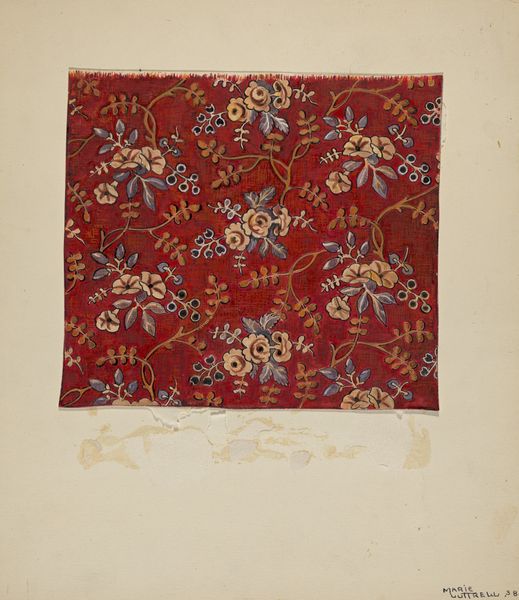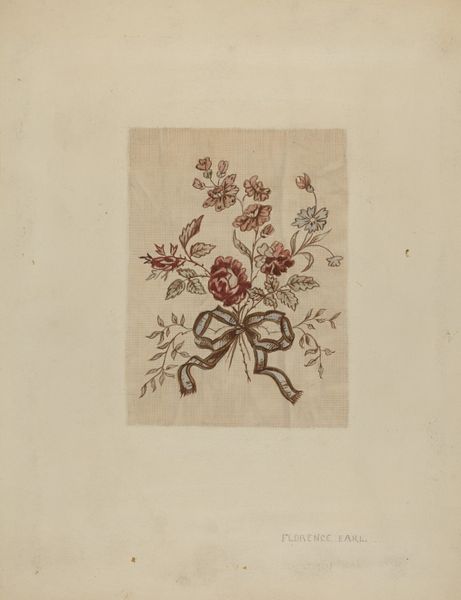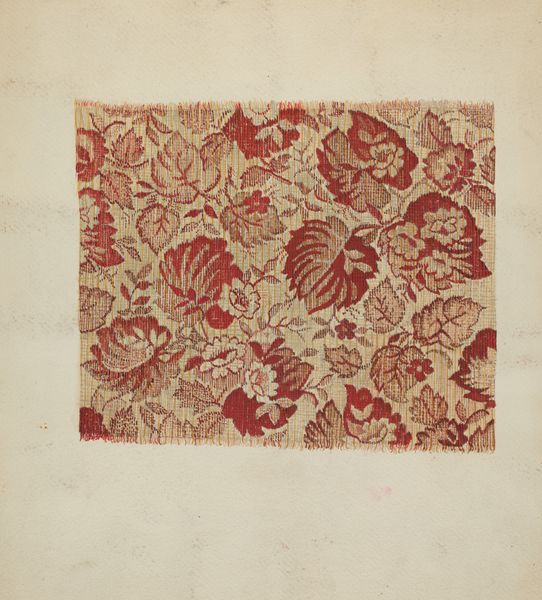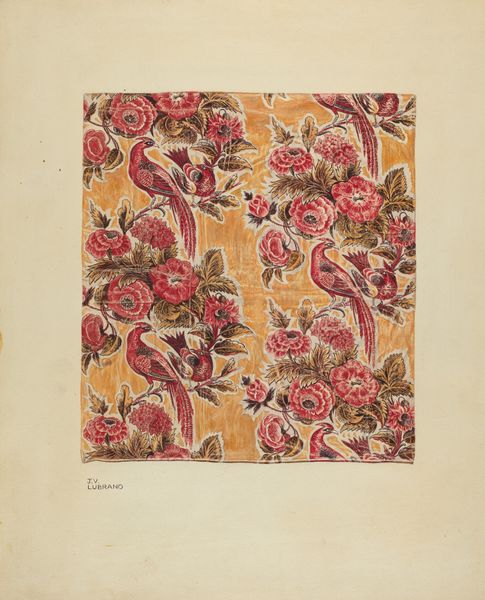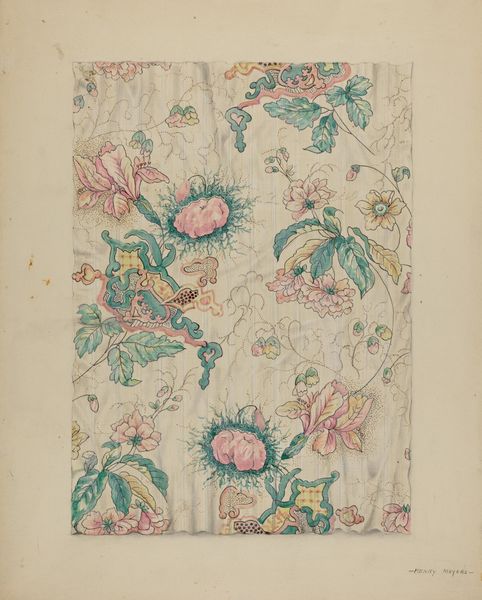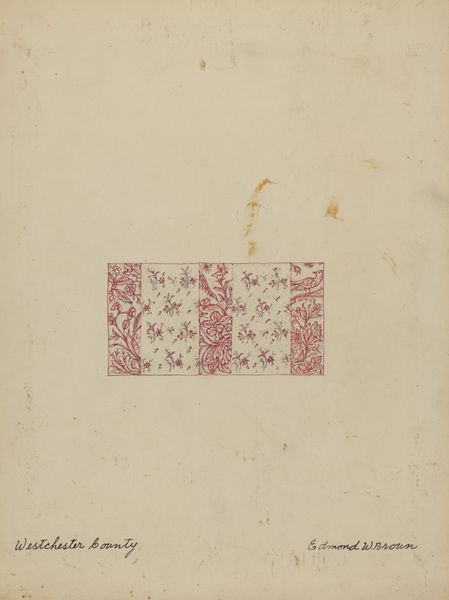
drawing, watercolor
#
drawing
#
water colours
#
watercolor
#
decorative-art
#
watercolor
Dimensions: overall: 35.5 x 45.8 cm (14 x 18 1/16 in.)
Copyright: National Gallery of Art: CC0 1.0
Editor: This is Lester Kausch’s “Flowered Challis Gown,” a watercolor drawing from around 1940. The delicate floral pattern evokes a sense of vintage charm and domesticity, almost like a page torn from a forties-era wallpaper catalogue. What story do you see within its design? Curator: It’s interesting you say that, because pattern design, especially for textiles, carries significant cultural weight. How did patterns impact everyday life? They influenced not only personal expression through fashion, but also ideas surrounding class and gender. Consider who purchased and wore such fabrics, and for what occasions. It reflected aspirations and socio-economic positions within a community. Editor: That's fascinating! I hadn't really thought about fabric design as a reflection of societal values in that way. It feels more like pure decoration on the surface. So the seemingly simple choice of floral prints actually reveals a complex relationship with identity and social norms? Curator: Exactly. Also, thinking about the museum space itself - how does exhibiting such a drawing impact its meaning? Once meant to inspire the manufacturing of yard goods and dressmaking, here it operates on a different plane, viewed as art. Editor: It’s like its function is completely transformed. The pattern shifts from commercial use to an aesthetic experience. Curator: Precisely. Museums can recontextualize even the most functional design, turning it into a reflection on history and consumer culture. And, that makes me wonder, what will future museum-goers think of it? Editor: This makes me rethink decorative arts completely; seeing how embedded they are in the history of everyday social practice! Thanks for the perspective.
Comments
No comments
Be the first to comment and join the conversation on the ultimate creative platform.

